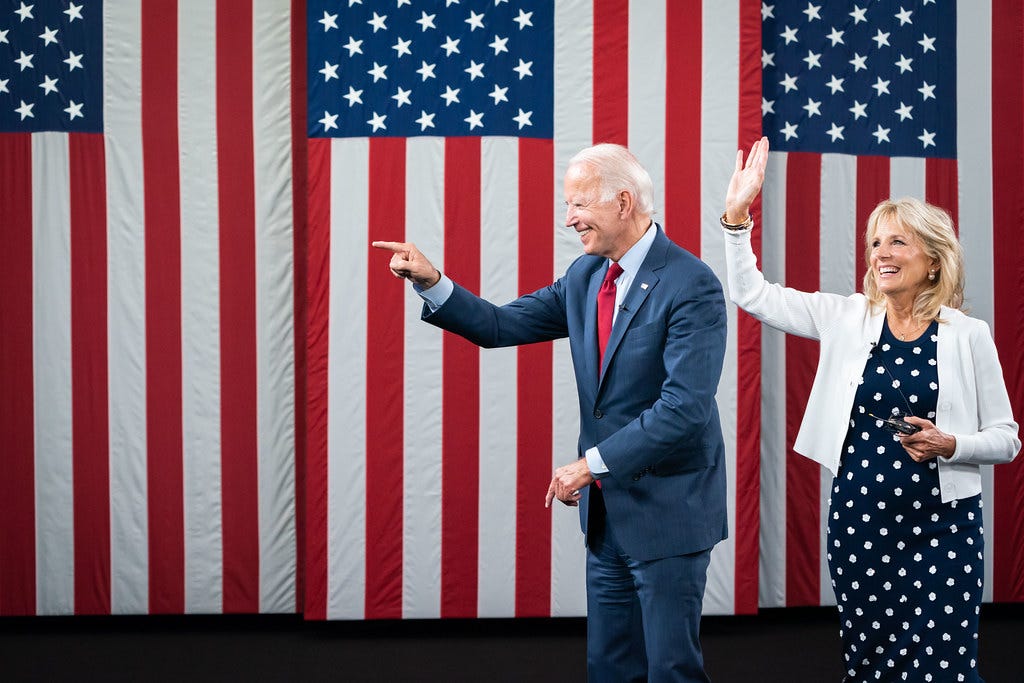Biden Demonstrates the Politics of Best Next Steps
The elements of his Rescue Plan may yet win bipartisan acceptance
Tim served as Chief of Staff for Gov. Kulongoski. A former union leader, he lives near Independence and oversees a specialty apple orchard.
In my years as a union negotiator and later as an advisor to governors, I came to see the wisdom of what I now call “best next steps.” Not “next best,” which implies something less than what is righteous, deserved, and fair. But “best next,” which captures what is feasible in a given moment and creates a trajectory to more and better in the next round of bargaining or budgeting.
President Joe Biden’s American Rescue Plan is an exemplar of the “best next steps” strategy. It’s not everything progressives might define as optimal. It falls short of what the Bernie Sanders wing of the Democratic Party feels we deserve. But it is a big step for economic justice and creates a new path forward for expanding government’s role in supporting working families in the years ahead.
Any “best next steps” strategy will always have its critics, as I learned in the many union caucuses and political strategy meetings that I’ve been part of in the past. The usual dissents are twofold. The first was captured succinctly by an activist I still remember from my early years in the labor movement: “Ain’t nothing ever enough.” The other reflects distrust and disillusion with hearing, one time too many, “wait til next year.”
We’re hearing both of these criticisms of the Biden plan from the left. The most ridiculous complaint is that Biden promised a one-time Covid relief payment of $2,000 to working families but only delivered $1,400. But, as the mathematically astute are tweeting in response, $1,400 (in the ARP) plus $600 in the (in the December relief package) = $2,000.
The other complaint is that the Biden plan has too short a shelf life for its many provisions. But this was a budget bill, not a policy bill. As it was, Biden took the promise of those $2,000 payments, popular with both Republicans and Democrats, and turned it into a locomotive pulling more than its weight in benefits for the unemployed, for children, and for the working poor. Yes, those provisions are time limited, but they will generate both new momentum and new models for government policies to fight poverty, redress income inequality, and promote economic opportunity.
The expansion of the child tax credit is Exhibit A for the “best next steps” approach. I expect those $250-$300 monthly payments for children will prove to be not only highly popular but highly effective in reducing child poverty – more so than any social service program with an equivalent price tag. That should be music to the minds of conservatives, who, if they support any role for government in supporting working families, prefer payments over programs.
But it also suggests that we’re now on a path to a mini-Social Security system to help support kids. That’s a means to the end of inter-generational equity in our tax and spending policies that should appeal to progressives. And both Republicans and Democrats can tout the benefits of increased investment in our future, whether seen through the lenses of opportunity or equity.
The next steps will be the test for Biden’s strategy. Expect to see a typically partisan wrangle over the terms and conditions for extension of the child tax credit in the Congress next year. But that is likely to occur in an atypical environment of support from both Democrats and Republicans for continuing some form of cash assistance for kids. That used to be a campaign talking point for both parties. Now it’s a reality.
As we saw with Bill Clinton’s Children’s Health Insurance Program, the next steps are best when they prove their value to the voters, no matter which party champions them. That’s when they become durable and, over time, gain bipartisan acceptance.

****************************************
Connect with Tim:
@TimNesbittOR




